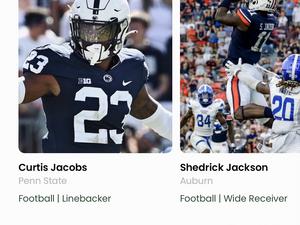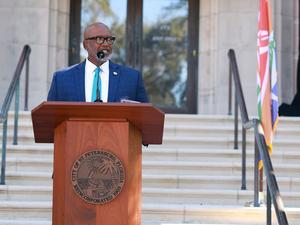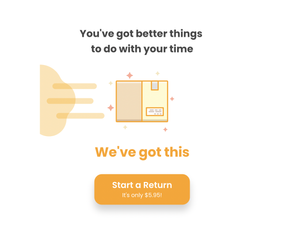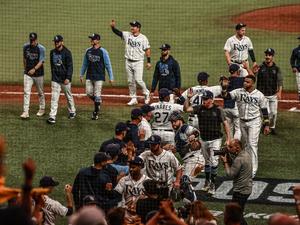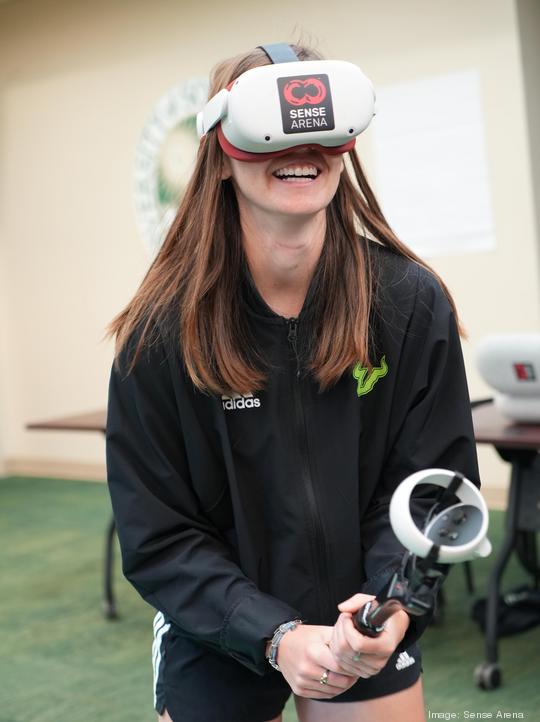
A Czech Republic technology company has tapped the University of South Florida to debut its virtual reality tennis technology.
Sense Arena, founded in 2017 with a focus on virtual reality hockey, has expanded into the tennis world.
Yannick Yoshizawa, VP of Sense Arena’s tennis division, is a graduate of USF and a current Tampa resident. While the company is well-established with hockey — working with five National Hockey League teams and 12 Division 1 schools — Yoshizawa thought USF would be the perfect fit to debut the tennis technology.
“I think USF hasn’t reached top 10 [among tennis programs] but has always been in the top 30 and always close to breaking through,” Yoshizawa said, adding he thinks this could be their ace shot. “USF, I call it home, but also I got lucky with the people working there now; with the coaches being open-minded [toward the technology].”
The one-year partnership started this month, and while there was a bit of initial hesitation, USF’s tennis coach Cristina Moros thinks it’s a winning play.
“We’re getting into the tech space a bit more; we’re having our matches analyzed and complementing that with this technology,” she said. “It’s the way things are going now, and in order for us to keep up, we’ve got to be in the space.”
Players wear a virtual reality headset and hold a “racket” that mimics the feel of a traditional racket. Each time a player hits the virtual ball, the racket vibrates in a way similar to what happens in the real world. The technology allows players to practice hitting and serving without risking injury.
Beyond practicing the physical skill, the software is intended to help the team with intangible skills, including anticipation, decision making and reaction time.
“Especially at the level we play at, everyone is fit; everyone can hit the ball and everyone is good,” Moros said. “It’s the little intangible things of quick decision making in a split second that [this allows them] to focus on a lot more without pushing them physically, without them getting injured. It’s a huge help.”
Moros added the team is doing an internal contest for scoring on specific drills on the headset.
Beyond helping the current team members, she is hopeful it will serve as a beacon for future player recruitment.
“Hopefully — and I do think it will — this takes off, and it’s a big advertisement for our program to be the first one to do it,” she said. “Because I do believe ... it’ll be a space that’s really going to catch on.”
